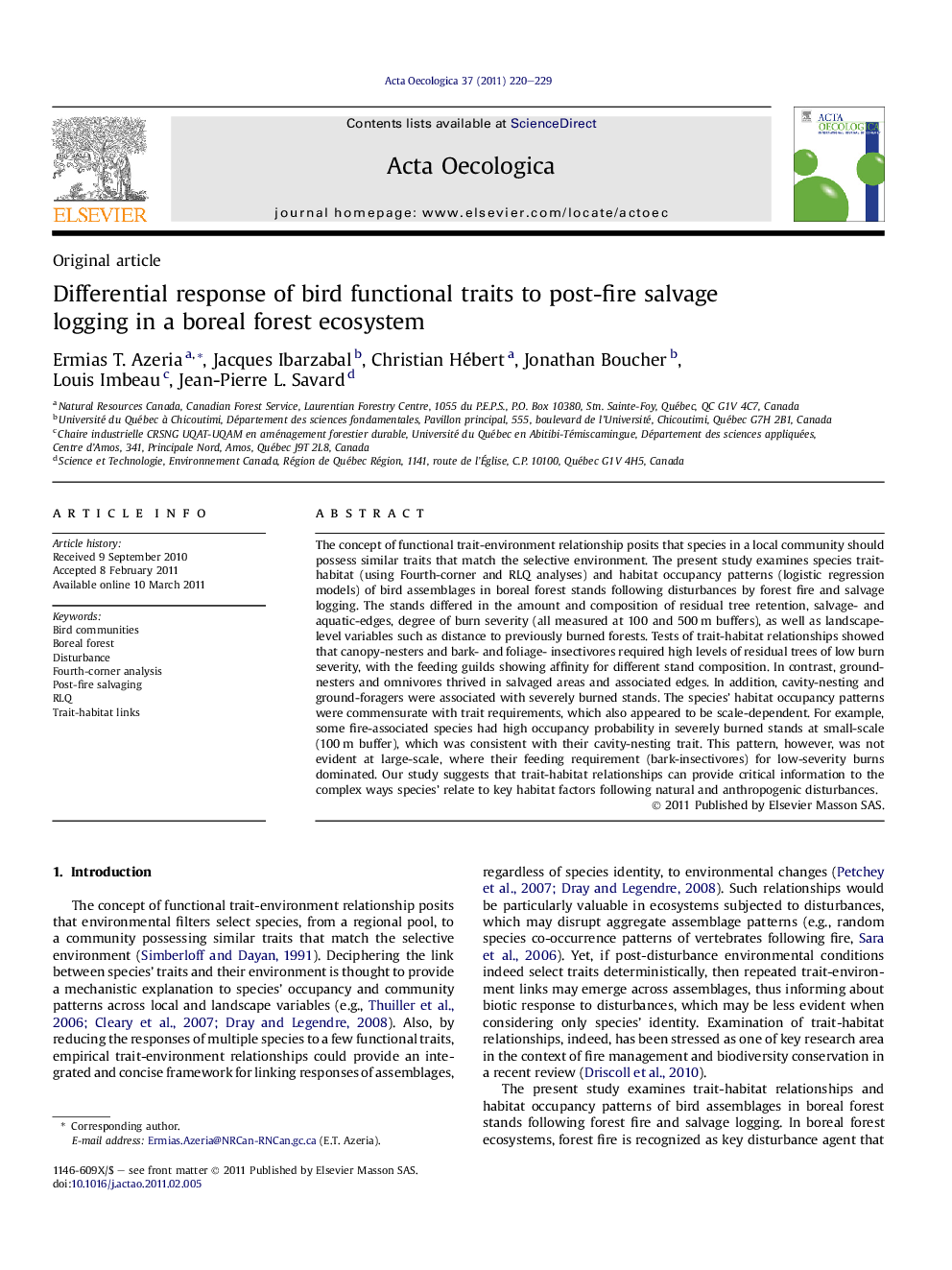| Article ID | Journal | Published Year | Pages | File Type |
|---|---|---|---|---|
| 4380916 | Acta Oecologica | 2011 | 10 Pages |
The concept of functional trait-environment relationship posits that species in a local community should possess similar traits that match the selective environment. The present study examines species trait-habitat (using Fourth-corner and RLQ analyses) and habitat occupancy patterns (logistic regression models) of bird assemblages in boreal forest stands following disturbances by forest fire and salvage logging. The stands differed in the amount and composition of residual tree retention, salvage- and aquatic-edges, degree of burn severity (all measured at 100 and 500 m buffers), as well as landscape-level variables such as distance to previously burned forests. Tests of trait-habitat relationships showed that canopy-nesters and bark- and foliage- insectivores required high levels of residual trees of low burn severity, with the feeding guilds showing affinity for different stand composition. In contrast, ground-nesters and omnivores thrived in salvaged areas and associated edges. In addition, cavity-nesting and ground-foragers were associated with severely burned stands. The species’ habitat occupancy patterns were commensurate with trait requirements, which also appeared to be scale-dependent. For example, some fire-associated species had high occupancy probability in severely burned stands at small-scale (100 m buffer), which was consistent with their cavity-nesting trait. This pattern, however, was not evident at large-scale, where their feeding requirement (bark-insectivores) for low-severity burns dominated. Our study suggests that trait-habitat relationships can provide critical information to the complex ways species’ relate to key habitat factors following natural and anthropogenic disturbances.
